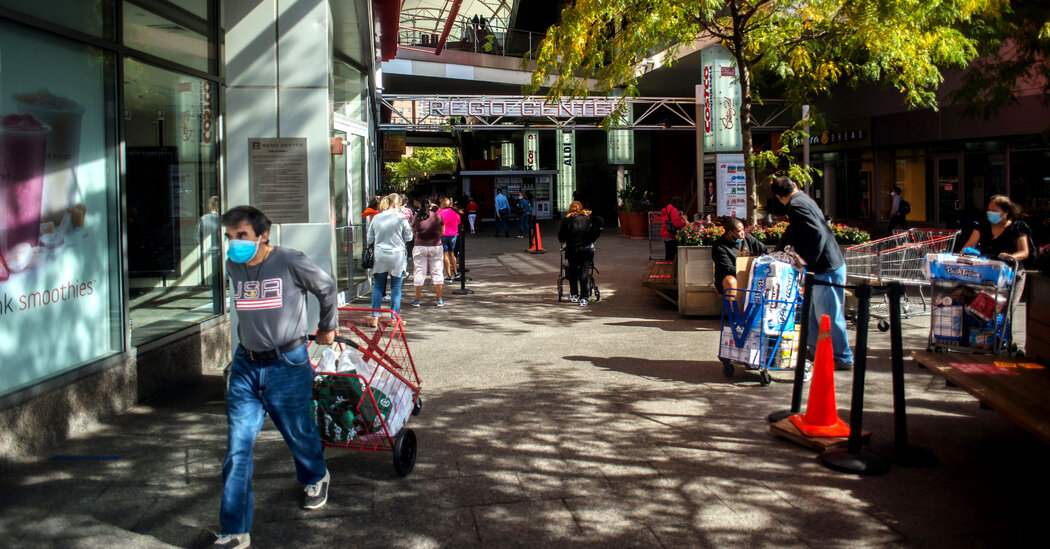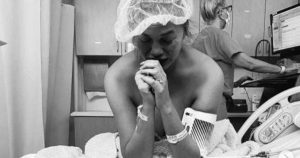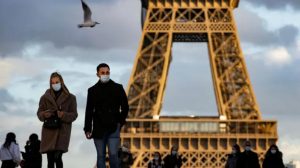ALBANY, N.Y. — Gov. Andrew M. Cuomo announced on Wednesday that some lockdowns in New York City neighborhoods with rising coronavirus cases would be eased, allowing the reopening of schools and businesses that had been shuttered.
But stringent restrictions remained in place for other neighborhoods at the heart of the outbreaks in Brooklyn, as well as for several communities in Rockland and Orange Counties. Another neighborhood, Ozone Park in Queens, was added to the list requiring limitations on activity.
It was an acknowledgment that while progress had been made during two weeks of lockdowns, targeted restrictions — which include attendance limitations at mass gatherings and houses of worship — remained necessary to keep isolated outbreaks from engulfing New York City, the former epicenter of the nation’s pandemic.
The changes seemed bound to add more confusion over the tiered, three-color system of zoned restrictions, a classification that was additionally complicated on Wednesday when the governor unveiled a new “microcluster strategy.”
It included a statewide system of four tiers, grouped by geographic regions and population. Each tier has its own benchmarks for rates of infection, which, along with other factors, will indicate when locations can enter and exit levels of restrictions.
Regardless of that complexity, the governor insisted that his plan to tackle the state’s outbreaks was effective.
“It is working,” Mr. Cuomo said, in his news conference at the Capitol, adding, “We know how to do this. We just have to do it.”
The governor said that if a neighborhood’s positivity rate remained under 3 percent after 10 days, the most serious restrictions could be lifted. Less populous areas would have slightly more relaxed standards for lifting the most serious restrictions: under 4 percent over 10 days.
Those “red zone” restrictions include closing schools, shuttering of nonessential businesses, banning mass gatherings, limiting restaurants to delivery and takeout and restricting houses of worship to 25 percent of capacity or a maximum of 10 people.
But in some cases, the governor said more amorphous considerations would be taken into account, such as whether communities were “cooperating,” or whether local governments had engaged in “effective compliance.”
Mr. Cuomo’s new “microcluster” plan resulted in some oddities: In the Kew Gardens/Forest Hills neighborhood in Queens, the rate of positive tests fell to 2.5 percent, a level that allowed it to move out of the red zone and into the yellow, the least restrictive zone, skipping over orange entirely. State officials also pointed to a different metric for the change: a decline in daily hospital admissions over a two-week period.
Mr. Cuomo, a third-term Democrat, stressed that the statewide numbers remained low, with an average positivity rate of 1.2 percent over the last week, far below most other parts of the country. Even neighboring states of New Jersey, Connecticut and Pennsylvania, which had largely been containing the virus, have seen recent upticks.
The changes should allow thousands of children in Queens and Brooklyn to return to school as soon as Monday, according to state officials, while some businesses shuttered by the harshest restrictions can reopen as soon as Thursday.
“It’s going to be a breath of fresh air,” said Thomas J. Grech, the president of the Queens Chamber of Commerce. “We’re trying to inch back toward some kind of normalcy.”
Still, Mr. Cuomo said he anticipated rising rates of infection throughout the autumn, as more people congregate inside and schools and colleges try to welcome students back.
“I think all these numbers are going up,” the governor said, also noting New York’s position as a travel hub.
Two weeks ago, Mr. Cuomo ordered the closure of schools and most businesses and placed restrictions on houses of worship in areas where coronavirus rates had been increasing and the percentage of positive tests had reached a worrisome level.
The closures, which were ordered on Oct. 6 and affected neighborhoods in Brooklyn, Queens and in Rockland and Orange Counties, were set to last at least 14 days.
The state drew its three-tiered system of zones — red, orange and yellow — centered around the neighborhoods, most of which have a large population of Orthodox Jewish residents.
The focus on the hot spots, where some had flouted limits on gatherings and others had doubted the efficacy of public health measures, sparked an immediate backlash, with protesters setting fires, burning masks and accusing Mr. Cuomo and Mayor Bill de Blasio, who had also called for closures in those areas, of anti-Semitism.
Many business owners complained about the new closures and the dividing lines, which cut through neighborhoods, in some cases shutting businesses on one side of a street while leaving them open on another. Parents were also left scrambling for child care after some public schools closed, just days after welcoming back students for in-person classes.
On Wednesday, Michael Mulgrew, the head of the United Federation of Teachers, said that he welcomed the latest changes, noting that his union had called for school closures in areas with rising infections.
“This is part of the vigilance we need to maintain around the coronavirus,” Mr. Mulgrew said in a statement. “When the infection rate is rising, we take increased precautions, including putting students and staff on remote. When the numbers improve, we can reopen the buildings.”
Avery Cohen, a spokeswoman for Mayor Bill de Blasio, said that the mayor was “encouraged by the progress we’re seeing and will continue our work with the state to drive transmission down.”
There were some troubling signs amid generally good news in the city: The statewide rate of daily positive results ticked to its highest level since early June, at 1.62 percent, reflecting the spikes in red zones, where testing shows rates well above 6 percent. Hospitalizations in the state also rose to 950, the highest since late June.
The state has also reported increased infections along the state’s southern border with Pennsylvania, leading to new restrictions in several counties that had largely been spared the worst of the outbreak in the spring, when tens of thousands of New Yorkers died in the city and its suburbs.
The more serious of these was in Chemung County, which has been placed in an orange zone, which limits mass gatherings to 10 people, closes in-person schooling and places limits on businesses, restaurants and religious institutions.
In the city, while a large swath of southwestern Brooklyn was still in a red zone, Mr. Cuomo reduced restrictions just beyond a cluster in Borough Park. Neighboring areas that had been in an orange zone were downgraded to the less restrictive yellow zone, which allows for businesses to remain open, some indoor mass gatherings and indoor dining, and schools to open with mandatory testing.
Mr. Cuomo said that he believed that more zones could be created around the state if numbers rise locally. “I think you’re going to see more microclusters in New York,” he said. “If you are good at finding it when it is small and before it spreads, then you can control it.”
If clusters could not be contained, he said, regional closures could follow.
J. David Goodman reported from New York.



















